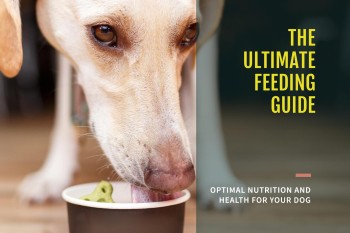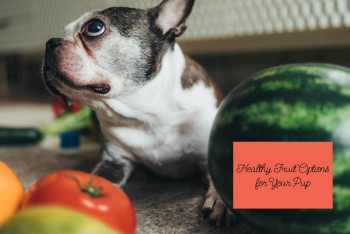- 10 Oct 2024
- Mitun Sarkar
Is the Raw Dog Food Diet Right for Your Dog?
The growing popularity of raw dog food diets has sparked intense debate in the world of pet care. Advocates claim that a raw diet can mimic the natural, ancestral diets of dogs, promoting better health, shinier coats, and increased vitality. On the other hand, skeptics raise concerns about potential health risks, nutritional imbalances, and safety issues.
In this guide, we will dive deep into the pros, cons, and considerations of the raw dog food diet to help you determine if this diet is the best choice for your furry friend.
What Is the Raw Dog Food Diet?
The raw dog food diet, often referred to as the "BARF" diet (Biologically Appropriate Raw Food or Bones and Raw Food), consists of feeding dogs raw meat, bones, vegetables, fruits, and other natural ingredients. This diet is designed to replicate what dogs would have eaten in the wild before domestication.
Typical components of a raw dog food diet include:
- Raw Muscle Meat: Chicken, beef, lamb, pork, and turkey.
- Raw Bones: Preferably from chicken wings, thighs, or necks, which provide calcium and phosphorus.
- Organ Meat: Liver, kidneys, and hearts, which are rich in essential nutrients.
- Vegetables and Fruits: Carrots, spinach, broccoli, apples, and berries for added vitamins and minerals.
- Supplements: Omega-3 fatty acids, probiotics, and other necessary nutrients that might not be available through food alone.
Key Principles of the Raw Diet
- Minimal Processing: The diet avoids commercial kibble and processed foods, maintaining the integrity of raw ingredients.
- Species-Specific Nutrition: It aims to offer nutrients that align with the natural dietary needs of canines, which evolved as carnivorous hunters.
- Balanced Nutrition: Ideally, a raw diet provides a balanced mix of proteins, fats, vitamins, and minerals.
Benefits of a Raw Dog Food Diet
Many dog owners who switch to raw feeding report noticeable improvements in their dogs' overall health and well-being. While individual results can vary, here are some of the most commonly cited benefits:
1. Healthier Coat and Skin
One of the most immediate benefits of the raw diet is a shinier, healthier coat. The abundance of high-quality fats and proteins in raw meat nourishes the skin and coat from the inside out. Raw feeders often notice a reduction in shedding and dry, flaky skin, as well as a softer and more lustrous coat.
2. Improved Digestion and Smaller Stools
A raw diet, rich in natural enzymes and probiotics, supports a healthy gut microbiome. Many dogs experience less bloating, fewer digestive issues, and more regular bowel movements. Raw-fed dogs typically produce smaller, firmer stools, as their bodies are able to digest and absorb more nutrients from the food.
3. Stronger Immune System
The raw diet is packed with vitamins, minerals, and antioxidants, which help support a dog’s immune system. Foods like organ meats, bone broth, and leafy green vegetables are rich in nutrients that strengthen immune function, helping dogs better fight off infections and diseases.
4. Increased Energy and Vitality
Raw feeding enthusiasts often claim that dogs on this diet display higher energy levels, increased stamina, and greater vitality. This is likely due to the high protein content of the raw diet, which fuels muscle function and physical activity.
5. Dental Health Benefits
Chewing on raw bones helps clean dogs' teeth and prevent the buildup of plaque and tartar. This natural dental care can help reduce the risk of periodontal disease, which is a common issue in dogs fed a kibble-based diet. Additionally, raw bones provide natural calcium, which supports bone and joint health.
Risks and Concerns of the Raw Dog Food Diet
While the benefits of the raw diet are compelling, there are also risks and concerns that pet owners must consider before making the switch.
1. Risk of Bacterial Contamination
Raw meat can contain harmful bacteria such as Salmonella, E. coli, and Listeria, which pose a risk to both pets and humans. Improper handling, storage, or preparation of raw meat can lead to contamination, which may result in illness. Dogs with compromised immune systems or underlying health conditions are particularly vulnerable to these risks.
2. Nutritional Imbalances
It can be challenging to formulate a raw diet that meets all of a dog's nutritional needs. Without careful planning and consultation with a veterinarian or animal nutritionist, some dogs may suffer from deficiencies in essential nutrients like calcium, phosphorus, and certain vitamins. Imbalances can lead to serious health issues, such as skeletal problems, poor coat condition, and weakened immune function.
3. Choking Hazards and Bone Fragments
While raw bones can offer dental health benefits, they also pose choking risks or the danger of splintering, which can cause internal injuries or obstructions. Certain bones, particularly those that are cooked, are more prone to splintering, making them unsafe for dogs to chew.
4. Cost and Time Commitment
Feeding a raw diet can be more expensive than commercial kibble, especially when sourcing high-quality, organic meats. In addition, preparing and portioning raw meals requires a significant time commitment, as meals need to be balanced and appropriately handled to ensure freshness and safety.
Veterinary Opinions on Raw Feeding
Veterinary professionals have mixed opinions on raw dog food diets. While some holistic veterinarians and pet nutrition experts advocate for the raw diet, many mainstream veterinarians express concerns about the risks, particularly bacterial contamination and nutrient imbalances.
Proponents of Raw Feeding
Veterinarians who support raw feeding believe that the natural, minimally processed approach offers numerous benefits for dogs. They argue that commercial kibble, which is often highly processed and filled with additives and preservatives, lacks the nutritional integrity of raw foods. Some veterinarians claim that raw-fed dogs are less prone to allergies, skin conditions, and digestive disorders.
Opponents of Raw Feeding
Many veterinarians, especially those aligned with conventional veterinary practices, warn against raw feeding due to the potential risks. They cite the dangers of bacterial contamination, choking hazards from bones, and the difficulty in achieving proper nutritional balance without guidance from a qualified nutritionist.
Is the Raw Dog Food Diet Right for Your Dog?
The decision to switch your dog to a raw diet should be made after careful consideration of both the benefits and risks. Below are some factors to help you decide if the raw dog food diet is right for your pet:
1. Your Dog's Health and Lifestyle
- Young, healthy, and active dogs may thrive on a raw diet, as their immune systems are better equipped to handle potential bacterial exposure and their nutritional needs can be more easily met with proper guidance.
- Dogs with underlying health conditions or those who are immunocompromised should be carefully assessed by a veterinarian before transitioning to raw feeding.
- Senior dogs may also require special consideration, as they may have different nutritional requirements and digestive sensitivities.
2. Your Commitment to Meal Preparation
Feeding your dog a raw diet requires a significant time and financial commitment. You will need to invest in high-quality, fresh ingredients, as well as time to prepare and portion meals. For those with busy schedules or limited budgets, this can be a major drawback.
3. Consultation with a Veterinarian
Before switching your dog to a raw diet, consult with your veterinarian or a certified pet nutritionist. They can help you formulate a balanced raw diet that meets your dog's specific needs, while minimizing the risks of nutrient deficiencies or bacterial contamination.
4. Assessing Your Dog's Response
If you decide to switch to a raw diet, closely monitor your dog's response. Keep an eye out for any changes in their health, energy levels, or digestion. Regular veterinary checkups, including blood work and nutritional assessments, can help ensure that your dog is thriving on the raw diet.

Common Misconceptions About Raw Dog Food Diets
The raw dog food diet is often surrounded by misconceptions that can create confusion for pet owners. Let’s clear up some of the most common myths:
1. Myth: Dogs Need Carbohydrates for Energy
Dogs are primarily carnivorous and derive most of their energy from proteins and fats, not carbohydrates. While small amounts of carbohydrates can be beneficial, they are not essential for a dog's diet. In fact, many commercial dog foods contain excessive amounts of carbs, which can contribute to obesity and other health issues.
2. Myth: Raw Diets Are Always Nutritionally Balanced
Raw diets can be nutritionally balanced, but it requires careful planning. Many people believe that simply feeding a variety of meats and bones is enough, but the truth is, an improperly balanced raw diet can lead to nutrient deficiencies or excesses. Consulting with a pet nutritionist is essential for ensuring that your dog gets all the nutrients they need.
3. Myth: All Dogs Can Easily Transition to Raw
Not all dogs will take to a raw diet immediately, and some may experience digestive issues during the transition. A gradual shift from kibble to raw food, over the course of 7-10 days, can help ease this process. It’s important to monitor your dog's reaction during the switch and adjust as necessary.
4. Myth: Raw Feeding Is Dangerous Due to Bacteria
While bacterial contamination is a concern, it can be minimized with proper food handling techniques. Many raw feeders argue that dogs have more acidic stomachs than humans and are better equipped to handle bacteria like Salmonella. However, it’s crucial to maintain cleanliness during preparation, storage, and serving to ensure safety.
How to Safely Prepare and Store Raw Dog Food
Ensuring safety is paramount when preparing and storing raw dog food. Here are some steps to minimize the risk of contamination and preserve the nutritional integrity of the food:
1. Handling Raw Meat
Always wash your hands, cutting boards, and utensils thoroughly after handling raw meat. Use separate cutting boards for raw dog food and human food to avoid cross-contamination.
2. Freezing Raw Ingredients
Freezing raw meat for a few days before feeding it to your dog can reduce the risk of parasites. Most raw feeders store raw ingredients in the freezer and thaw individual portions in the refrigerator before feeding.
3. Portioning and Serving
Portion the food into individual servings before freezing. This makes it easy to thaw just the right amount for each meal. Serve the food in clean bowls and remove any uneaten food after 20-30 minutes to prevent spoilage.
Frequently Asked Questions About Raw Dog Food Diets
Q: Can puppies eat a raw diet?
A: Yes, puppies can thrive on a raw diet, but their nutritional needs are different from adult dogs. It’s important to ensure that puppies receive a properly balanced raw diet with the right proportions of calcium, phosphorus, and essential vitamins to support their growth.
Q: How much raw food should I feed my dog?
A: The general guideline is to feed your dog 2-3% of their body weight in raw food per day. This amount can vary based on your dog's age, activity level, and health condition. Consulting with a veterinarian can help you determine the correct portion size.
Q: Are there any vegetables or fruits that I should avoid?
A: Yes, some vegetables and fruits are toxic to dogs. Avoid feeding your dog onions, garlic, grapes, raisins, and avocados. Always research or consult a veterinarian before introducing new fruits or vegetables into your dog's diet.

















